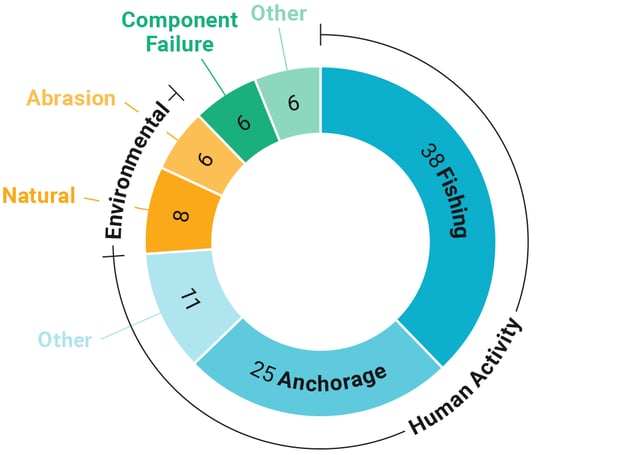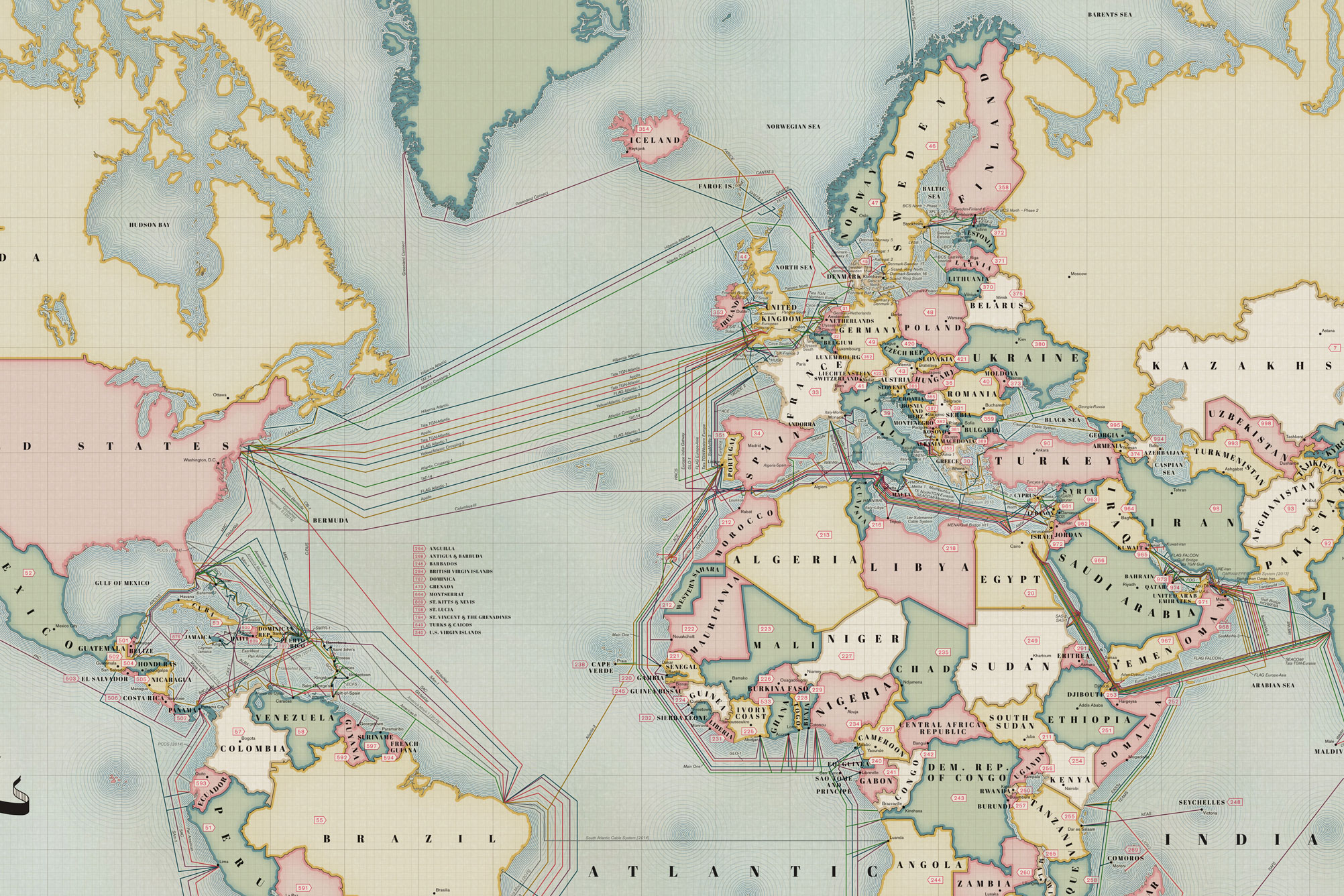Earlier this year we fielded some of the most frequently asked questions about submarine cables. How do they work? How thick are they? How many kilometers of cable are there?
Today, we're going back under the sea to talk about what happens when bad things happen to good submarine cables.

Cause of faults (%)Do cables break?Yes! Cable faults are common. On average, there are over 100 each year.
You rarely hear about these cable faults because most companies that use cables follow a “safety in numbers” approach to usage, spreading their networks' capacity over multiple cables so that if one breaks, their network will run smoothly over other cables while service is restored on the damaged one.
Unintentional damage from fishing vessels and ships dragging anchors account for two-thirds of all cable faults.
Environmental factors like earthquakes also contribute to damage. Less commonly, underwater components can fail. Deliberate sabotage and shark bites are exceedingly rare.
I’ve heard that sharks are known for biting cables. Is that not true?
This is probably one of the biggest myths that we see cited in the press. While it’s true that in the past sharks have bitten a few cables, they are not a major threat.
According to data from the International Submarine Cable Protection Committee fish bites (a category that includes sharks) accounted for zero cable faults between 2007 and 2014.
The majority of damage to submarine cables comes from human activity, primarily fishing and anchoring, not sharks.
What happens to cables when they are old and turned off?
Cables are engineered with a minimum design life of 25 years, but there is nothing magical about this time span.
Cables may remain operational longer than 25 years, but they’re often retired earlier because they’re economically obsolete. They just can’t provide as much capacity as newer cables at a comparable cost, and are thus too expensive to keep in service.
When a cable is retired it could remain inactive on the ocean floor. Increasingly, there are companies that are gaining the rights to cables, pulling them up, and salvaging them for raw materials.
In some cases, retired cables are repositioned along other routes. To accomplish this task, ships recover the retired cable and then re-lay it along a new path. New terminal equipment is deployed at the landings stations. This approach can sometimes be a cost-effective method for countries with small capacity requirements and limited budgets.
Alan Mauldin
Alan Mauldin is a Research Director at TeleGeography. He manages the company’s infrastructure research group, focusing primarily on submarine cables, terrestrial networks, international Internet infrastructure, and bandwidth demand modeling. He also advises clients with due diligence analysis, feasibility studies, and business plan development for projects around the world. Alan speaks frequently about the global network industry at a wide range of conferences, including PTC, Submarine Networks World, and SubOptic.





